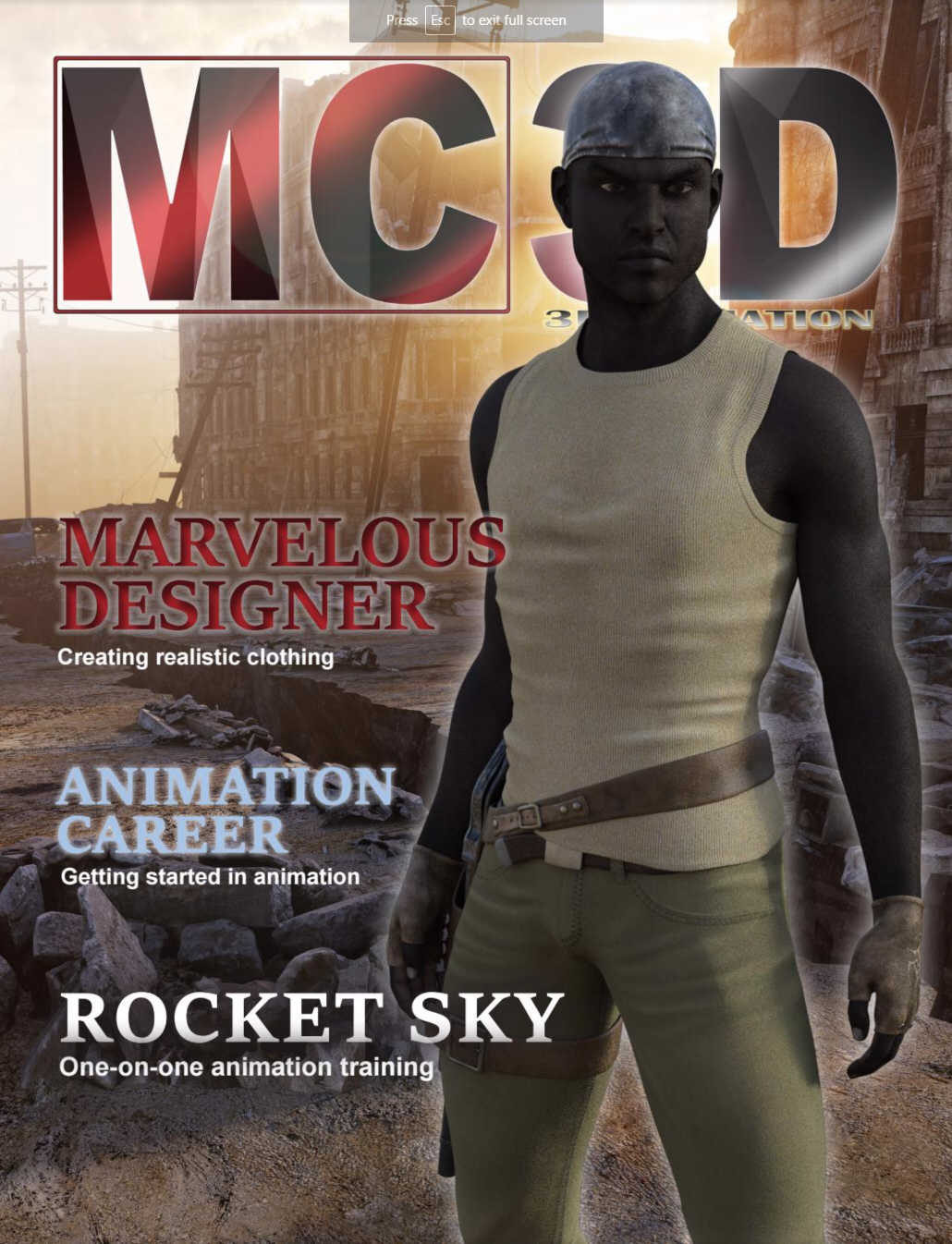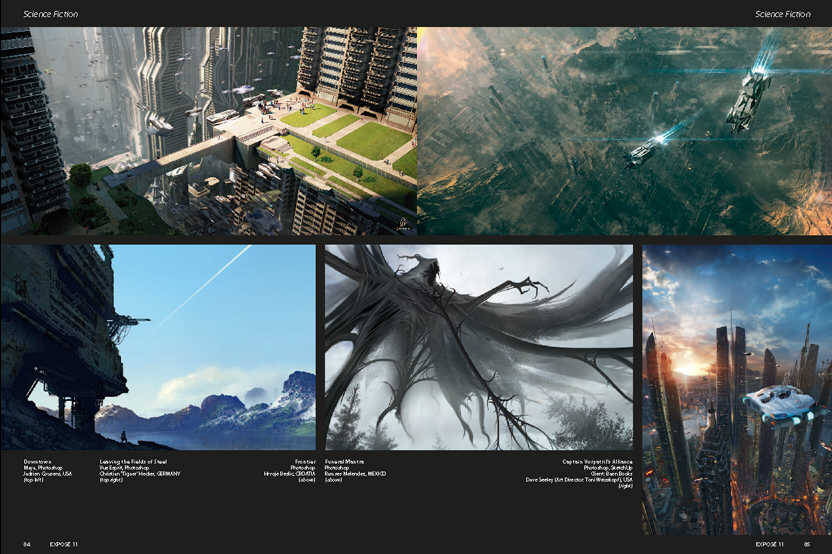
Animation Career Tips and Information
A Career in Animation
Practical advice for aspiring animators
Written by: Jim Lammers
Previously Published in Issue 2 of MC3D magazine by MavCore Media, viewable online at magcloud.
Your Animation Career
This is a golden age for artists. There have never been more potential places to find work as an artist than at the present time. And it has never been as fun as it is today, for a modern digital artist or animator. So much of the drudgework is handled by the computer that you can focus your mind and creativity on the art you are creating and not cleaning brushes, cutting masks, stretching canvases and breathing chemicals.
A modern digital artist needs to have modern skills beyond being an artist, encompassing the hardware and operating system of their workstation, general understanding of the internet, email and communication, as well as mastery of the software they use to create their art. Artists are often tech averse and some view it as a cruel irony that to be part of the golden age for artists, the artist must be very computer savvy.
If you have decided this might be the career for you, this article offers a few tips on learning and honing your skills and then finding a first job in the industry.
Pre-College
Don’t wait for a school or college to teach you the heavy stuff. 3D software such as Sketchup and Blender are free, and are an excellent way to start creating 3D art. If you are still in K-12 school, you can get almost any software at a discounted “educational” price. Usually you will want to learn an image editing program like Photoshop or Affinity, a compositing/motion graphics tool like After Effects or Nuke, and a 3D program like 3ds Max or Maya. This is the foundational animation career advice and information tool.
Going to College
The arts are unique as a career path, in that a college degree is not a requirement. In other fields like medicine or engineering, a degree is required and also a state professional license may be required as well. So if college is not required for an animator, what good is it? Here are the primary benefits of going to a school that offers an art or animation degree:
- Exclusivity – to the extent that the college is selective in who they allow to attend (and even more, who they will allow to graduate), the degree will hold some name value.
- Peers and networking – you will meet people at college that may get a job before you do, and find an entry point in a field you are interested in pursuing. So your college friends are sometimes the big break that gets your career started. You’ll need to be outgoing and friendly at college for this to apply. And – willing to relocate after college.
- Sometimes, rarely, a good teacher there may become your mentor and help challenge and guide your efforts to make you a better artist.
- 2 to 4 years of uninterrupted study, assuming you give it serious focus, should result in some real skills and a portfolio of good work.
There are two major drawbacks to college:
- You give up 2 to 4 years of your life working toward an art degree that you could be working and making money.
- You will likely spend or owe a significant amount of money for tuition, books, materials, room and board. If you end up choosing a different career, you will not get your money back.
Self-Study
If you have good self-discipline, you can develop your skills and portfolio on your own. Online training from sources like Lynda.com and digitaltutors.com can provide all the animation career advice and information you need. Peer review of work in progress can be found at many online forums, such as cgtalk.com. Educational software is priced to make it easy for a student to afford. If a student identification “ID” badge is required to attain the educational software you need, you can become an official student with as little as a single class at a local community college.

The Portfolio
The best animation career advice or information I can give is to begin building your portfolio. This is your body of work that you show off to prospective employers. The subjects and types of work included are decided upon as you go along, and it is important to actively choose what you will create during your development as an animator.
Some tips on developing your portfolio:
- Make sure the work is exclusively your own – rather than group projects or a sample/tutorial file that you modified and added to.
- The work is not obviously classroom exercises assigned by a teacher during a course. These are usually fairly obvious to the person evaluating your portfolio. If much of the portfolio consists of quick, short, teacher assignments and studies, it will seem like the candidate has not created much on their own. In fact, you should…
- Have at least one or two “great works.” That is, something you created from scratch, put a lot of thought into and that visually is obviously a large ambitious project.
- Choose a variety of subjects: characters, architecture, fantasy, product visualization, realtime/game/vr, spaceships, etc. The “Expose” series of books by Ballistic Publishing can provide inspiration for good and varied subjects and some beautiful digital 3D art to try to equal in quality and appeal.
- If possible, speak to your efficiency. It’s very important if a project took you 10 hours versus 1000 hours. For an employer, it’s a critical multiplier of your value since you are almost always paid by the hour or by the year. The employer is usually paid by the project. So your efficiency is one of your key statistics when you seek employment.
- Limit the in-person portfolio. About 6-8 great pieces of 3D art would be perfect.
- Always have fewer, better pieces than lots of average pieces. If you have a natural media portfolio, bring it too – about 3 or 4 of your best would be ideal. You can have an online gallery with your larger portfolio of all types of art, animation, photography and any other talents you possess.
The Resume
Be sure to include your full work history on your resume. If you have experience at retail, food service, freelance lawn service, or any situation where someone was paying you for your services and skills, it is definitely worth listing as you apply for your first job as a professional. This is because employers prefer not to be the first ones to teach the sometimes harsh realities that are always a part of work.
If you list software and your skill level, you might summarize your knowledge rather than assign a rating to it. Too many applicants list ten or more complex software products like Maya or Nuke and then assign a rating like a movie review – 4 out of 5 stars. This is often grossly exaggerated and it will come out in the interview if the truth is that there is only a shallow exposure to an application that we all know takes many years to master. A better approach might break the applications out to two categories, (A) primary tools with which you are very proficient and (B) secondary tools that you have used in a project but only know some basic areas. If you think it will help with a specific employer you can list other applications that you know they use in a (C) category that you have at least spent a few hours on it and know what it does.
A Thousand Places to Start Your Animation Career
The first and most obvious points of call for a newly minted game art or animation creator are the big animation and game studios, If these don’t result in a job, or your location requirements limit the number of potential large studios, don’t despair. Businesses of many types have jobs or will make jobs for a person who can help them solve their problems. The problems you can help with are communicating, marketing, and visualizing. So if you search more along these lines you might find many new potential places to seek employment.
A few ideas for expanding your range of potential employers:
- Manufacturers – many manufacturers need ongoing marketing, training instruction and design visualization. Even a mid-sized manufacturer can support a full time position, if the employee is not very expensive and comes off as one that is willing to fulfill a lot of roles. And every city has dozens if not hundreds of midsized manufacturers with this need. You may be able to create your own position if you choose a firm where you can directly approach the owner and make a deal with them.
- Architects and developers – mid-sized and larger firms often have enough projects going on that they can justify a full time animator, especially if that person is not very expensive and has other skills. Or expresses willingness to learn. Again, the work involved is design development (helping with in-house idea visualization), marketing (winning new jobs by having some beautiful renders of what this firm could do for that proposal) and client or public communication (presentation via renderings and animation, rather than blueprints, what the firm has in mind for the project).
- Gaming and VR developers – a growing field with many small new upstarts.
- Legal and medical visualization – larger metro areas often have firms that specialize in creating courtroom graphics. They need well rounded artists and animators.
- Videography and production studios – these usually have their primary business in shooting and editing live action, but there is usually a position open for a person to do motion graphics and similar work. If they can create 3D graphics too they are even more valuable.
Keep Interviewing
What do employers want to hire? Often it is boiled down to two things – can they do the work? And are they someone we can live alongside?
The employer always seems to be in a dominant position relative to the applicant. The employer is usually older, has the big desk, and is the one offering to pay the money. But the truth is that it is much more equitable: two parties that are seeking a mutually beneficial arrangement, talking and investigating enough to be able to take the chance with the other party that it might work. For both sides it is a big gamble: Bad bets usually consume many weeks of time and startup costs for both parties. Everyone wants it to be a good fit. So take time and ask questions to make sure you have a good feel for the personality of the company (which usually flows from the attitude and character of the owners or top brass) so that you don’t make a bad bet.
Also, both sides should be putting on their best first impression for the other party. Both sides know that this is probably as good as the other party will ever act. So, both parties should dress and groom well, listen attentively and speak in firm clear sentences. They should let their personality through and be as positive as possible.
Finally, if the job interview does not result in a job, remember that you are not being evaluated as a human being. The applicant is evaluated only with respect to the value they might bring now and in the immediate future, versus other candidates who have or will interview for the same position. If you are passed over for a particular position, it is not an evaluation of you as a human being or even as an animator. It only means that, at that moment, the employer decided to take the gamble on a different candidate for their immediate needs, based on their best guess.



